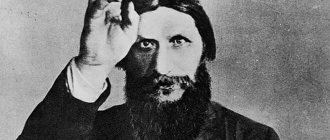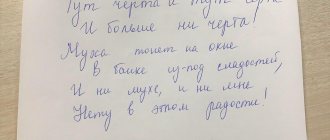Desensitization is a psychotherapeutic method developed by F. Shapiro for the purpose of treating individuals suffering from disorders that could be caused by the experience of various incidents, such as physical abuse. According to Shapiro’s ideas, after an individual has suffered mental trauma or distress, his experiences can “overwhelm” the possibilities of coping mechanisms, as a result of which the memory and messages associated with the incident are processed incorrectly and are stored dysfunctionally in inaccessible corners of memory. The goal of psychotherapy is to process these stressful memories and help the client develop more effective coping mechanisms. In other words, desensitization serves to relieve negative tension, anxiety, and fears of disturbing images, frightening objects, or frightening situations.
Desensitization method
Desensitization serves to reduce negative tension, anxiety, and fear of scary images, objects, or events.
If some event causes a feeling of fear and a reaction to it, this means that muscle tension has formed in the human body. More often, as a response to fear, tension appears in the collar area, diaphragmatic region, in the muscles surrounding the eyes and in the hands. In cases where the pressure of fear is repeated or continues for a long time, tension in the muscles is transformed into a muscle clamp, which can figuratively be called a storehouse of fear. Therefore, you need to understand that fear fits into the body, it lives in the muscle tension of the body. Hence, the main task of desensitization is to erase such clamps.
The desensitization technique involves reliving a frightening event on the physical plane, erasing the negative experience. There are many desensitization techniques available today. However, most of them differ only in the proposed physical background and the technology for creating it.
The simplest and most common version of desensitization is eliminating anxiety through relaxation. During the process of relaxation and immersion in a feeling of peace, the individual, under the supervision of a psychotherapist, begins to imagine those events or objects that previously gave rise to anxiety or fear. Alternately alternating approaching and moving away from the cause of anxiety, making a rollback when tension appears and returning to a state of rest, the subject sooner or later acquires the ability to imagine events or objects caused by fear, in a neutral state of mind.
Breathing practices are considered an effective desensitization technique. By controlling one’s own breathing, holding a calm and even breath when imagining a frightening object or during a real encounter with a frightening situation, an individual is able to erase previous pressures and regain inner peace and freedom of action.
Desensitization through eye movements is considered today one of the most effective areas of psychotherapy. It is used for short-term therapy. Its advantage is its ease of use, safety and versatility for working through all kinds of traumatic events.
What is EMDR NOT?
- “Sharik” on YouTube is a deception and profanation. The essence of bilateral stimulation is not limited to eye movements. Moreover, in our practice there have been cases when clients felt worse after this “ball”!
- "EMDR simulator" online - similar to the "ball". Eye movements alone don't do anything. Mandatory support and focusing of the client's attention by the operator is required! Without this, no therapy simply will happen.
- Devices for EMDR are similar to a ball, but they use one or two more channels of information perception. Without an operator they are completely useless. And with an operator, no “device” is simply needed. A great way to get money from suckers.
- The “butterfly” technique —tapping yourself on the shoulders with your arms crossed on your chest—is widely advertised as the “EMDR technique,” although it is a tapping technique—that is, activating biologically active points. Tapping works on completely different principles and has nothing to do with EMDR! Moreover, incorrect activation of the points can worsen a person’s condition and even cause harm.
- “EMDR” Kovalev - Sergey Viktorovich in his famous video demonstrates his understanding of the “EMDR technique” (using suggestive suggestion rather than bilateral stimulation). The movements seem to be correct, but... a) in EMDR the movements of the fingers (and, accordingly, the eyes) should be approximately three times faster than demonstrated, b) during eye movements the operator must be silent!, c) in order to obtain the desired amplitude of eye movements, the monitor must be at least 50 inches :), d) the operator’s hand should under no circumstances be in front of his own face, because the client will definitely get confused by the operator’s face!
Systematic desensitization
One of the first approaches that laid the foundation for the spread of behavioral therapy is today considered the method of systematic desensitization proposed by D. Wolpe. While developing the basic ideas of the desensitization method, Volpe came from several postulates.
Neurotic, interpersonal and other maladaptive behavior of an individual is mainly caused by anxiety. The actions that the subject performs in the imagination are equated to the actions performed by the individual in reality. Even the state of relaxation of the imagination will not be an exception to this postulate. Anxiety and fears can be suppressed if you combine in time the messages that cause fears and the messages that are opposite to fear, as a result of which the message that does not cause fear will extinguish the previous reflex. So, using the example of experiments with animals, feeding is such a dampening factor. And in a person, such a factor opposite to fear can be relaxation. It follows that teaching the individual deep relaxation and encouraging him to conjure up messages that cause anxiety in this state will lead to desensitization of the patient to real messages or situations that cause fear.
The method of systematic desensitization is relatively simple. In a patient who is in deep relaxation, ideas about events that give rise to fear are evoked. After this, through deepening relaxation, the individual eliminates the anxiety that arises. Mentally, in the imagination, the patient pictures various events, starting with the easiest and ending with the most difficult, generating the greatest fear. The desensitization session ends when the strongest message no longer causes fear in the individual.
Specific desensitization is divided into three stages, including mastering muscle relaxation techniques, creating a hierarchy of events that cause fear and desensitization itself - combining ideas about fear-causing events with relaxation.
Progressive relaxation training using the Jacobson method is carried out in an accelerated mode and takes approximately 9 sessions.
The patient may have phobias of a different nature, therefore all events that produce fear are divided into thematic groups. For each such group, the individual must create a hierarchy from the mildest events to the very difficult ones that give rise to pronounced fear. It is best to rank events according to the level of severity of fear together with a psychotherapist. The actual experience of fear by an individual in such a situation is a prerequisite for creating a hierarchy of frightening events.
Specific desensitization involves discussing a feedback technique that involves the patient informing the therapist about the presence or absence of fear at the moment of imagining the event. For example, the patient informs about the presence of anxiety by raising the index finger of his left hand, and about its absence by raising the finger of his right hand. Event presentations occur according to a constructed hierarchy. The patient imagines the event for 5–7 seconds, and then eliminates the anxiety that has arisen through increased relaxation. This stage lasts up to 20 seconds. Imagination of events is repeated up to several times in a row; if the individual does not develop anxiety, then one should move on to the next, more severe event. In one session, no more than 4 situations from the compiled hierarchy are worked out. If there is severe anxiety that does not disappear with repeated presentations of the situation, you should return to working through the previous event.
Today, the desensitization technique is used for neuroses caused by monophobias, which cannot be desensitized in real life situations due to the difficulty or impossibility of finding a stimulus in real life, for example, with a fear of flying in airplanes. In the case of multiple phobias, the desensitization technique is applied to each phobia in turn.
Systematic desensitization will be less effective in cases where anxiety is reinforced by secondary gain from the disease. For example, for a woman with agoraphobia, there is also a threat of her husband leaving home. In such a situation, the phobia will be reinforced not only by a decrease in anxiety when she does not leave the house and avoids situations that cause the phobia, but also by keeping her husband at home with the help of her symptoms. In such cases, the method of systematic desensitization will be effective only when combined with person-oriented areas of psychotherapy, focused on the patient’s awareness of the prerequisites for her behavior.
Systematic desensitization in real life contains two stages: the creation of a hierarchy of events that produce the appearance of fear, and direct desensitization, i.e. training in real conditions. The hierarchy of events that generate fear includes events that can be repeated many times in reality. The second stage is characterized by the therapist accompanying the patient in order to encourage him to increase his fear in accordance with the hierarchy.
Group therapy
Imagination desensitization was usually performed as an individual therapy. Lazarus later described group therapy of patients using this method. Patients with the same phobia were presented with the same hierarchy for desensitization. During group therapy, patients with various phobias were given situations from their own hierarchy on pieces of paper. Paul and Shannon, as well as Kondas, used group desensitization for individuals with phobias of public speaking and examinations. Migler and Wolpe introduced the concept of automatic desensitization, used to treat patients with a phobia of public speaking. Instructions on relaxation and desensitization were tape-recorded by the patient. The patient took the tape recorder home and conducted the desensitization sessions himself. Wolpe reports that Lang treated many people for their phobia of snakes using a tape recorder.
Eye movement desensitization
It has been suggested that eye movements or alternative types of stimulation used during desensitization procedures involve processes similar to those occurring during sleep.
The foundation of desensitization is the idea that each traumatic message is unconsciously processed by the brain and internalized during the dreaming stage of sleep, or in other words, the rapid eye movement stage of sleep. Severe mental trauma has a destructive effect on the natural process of information processing, which leads to incessant nightmares with frequent awakenings, resulting in a distortion of the REM sleep phase. Desensitization and processing with eye movements unblocks and speeds up the processing of traumatic experiences.
The essence of the desensitization method is the artificial activation of the process of forced processing and neutralization of memories associated with mental trauma and any other negative information blocked in the neurons of the brain. This method is able to provide quick access to separately stored traumatic information, which is subject to rapid processing. Memories that are characterized by negative emotional charge are transformed into neutral ones, and the corresponding ideas and views of individuals acquire an adaptive character.
The advantage of desensitization is to obtain quick results. This is what distinguishes it from most other methods of psychotherapy. F. Shapiro explains this phenomenon for the following reasons:
— in the course of setting the goal of influence, negative memories are combined into so-called clusters (i.e., a series of similar events), as a result of which only one, the most characteristic event from each cluster is processed through desensitization. This is often sufficient to generalize the consequences of transformation and simultaneously neutralize all similar memories;
— the method helps to gain direct access to dysfunctional data stored in memory;
— the information and processing systems of the brain are activated, which transforms information directly at the neurophysiological level.
Standard eye movement desensitization and reprocessing contains eight stages.
The first stage involves a safety assessment, during which the psychotherapist analyzes the clinical picture and outlines specific goals for therapy. The use of the desensitization method is only possible with patients who are able to cope with the possible high degree of anxiety during therapy. It is because of this that the therapist first helps resolve current problems, and then moves on to more ancient mental traumas. Ultimately, the future is worked out through the formation and consolidation of a positive example of behavior in the patient’s imagination. At this stage, clients are also taught to reduce stress through: imagining a safe place, luminous flow techniques, which involves imagining a beam of light with a healing effect entering the body, self-administered eye movements, or muscle relaxation.
The next preparatory stage is to identify painful symptoms and dysfunctional behavioral patterns. Also at this stage, therapeutic contact is established with the patient and the essence of the method is explained to him. The therapist finds out which of the proposed eye movements are less painful.
At the third stage, a negative self-image is identified, in other words, a currently existing negative belief directly related to mental trauma, reflecting the client’s self-image. It is also characterized by identifying a positive self-image, in other words, the belief that the client would like to have about himself. At this stage, the severity of negative emotional reactivity and bodily discomfort is also detected.
The fourth stage is directly desensitization and processing. It is characterized by causing the patient to move the eyes from one end of the optical field to the other. Such bilateral eye movements must be performed quickly, avoiding any discomfort. The psychotherapist asks the client to follow his fingers with his eyes. The psychotherapist's hand is facing the patient, the distance from the therapist's hand to the client's face should be no more than 35 cm. Typically, one series consists of approximately 30 eye movements. In this case, 1 movement is considered to be moving the eyeball back and forth. The direction of eye movements may change. First, the patient must concentrate mentally on the image of the traumatic event, negative self-image, negative and uncomfortable feelings associated with the memory. The therapist then begins a repetitive sequence of eye movements. After each series, the patient is asked to put aside the traumatic image and negative self-image for a while. The client must inform the therapist about any transformations in the picture of memories, emotions, ideas and sensations. Sequences of stimulating eye movements are repeated many times, at times directing the individual's attention to the most depressing associations that spontaneously arise during the procedure, and then again returning him to the original traumatic factor. The therapy session is carried out until the moment when the level of anxiety, restlessness, and fear during the reference to the original traumatic event decreases by 1 point on the scale of subjective anxiety.
The fifth stage is installation. It involves the client rethinking the previous experience, and the patient is imbued with the conviction that in reality he will be able to behave and feel himself in a new way.
At the next stage, the body is scanned. At this stage, the patient is asked to close his eyes and mentally scan his body, starting from the top of his head and ending with his heels. During the so-called scan, the patient must keep in mind his original memory and positive image of himself. If any residual tension or bodily discomfort is detected, additional series of eyeball movements should be performed until they are eliminated. This stage is considered a kind of test of the results of transformation, since with the absolute neutralization of the traumatic factor, it loses its negative emotional charge and ceases to generate uncomfortable sensations associated with it.
The goal of the seventh stage is to achieve emotional balance by the patient, regardless of the completeness of the processing of the trauma. For this purpose, the doctor may use hypnosis or other techniques. After the session, unconscious continuation of processing is possible if it has not been completed. As a result, the client is asked to remember or write down disturbing memories, thoughts or events, dreams, as they can be transformed into new targets of influence in subsequent desensitization sessions.
At the eighth stage, revaluation occurs. Its purpose is to check the effectiveness of the previous therapy session. Reassessment is carried out before each therapy session. The psychotherapist must assess the client’s reaction to previously processed goals, since it is possible to begin processing new goals only if the old ones are processed and assimilated.
On average, the duration of one therapy can range from an hour to two. It is not recommended to conduct more than two sessions per week.
Desensitization through eye movements has proven equally effective in working with children and adults, individuals with traumas from the past and with worries about the future. This method is easily combined with other areas of psychotherapy.
Use for self-treatment
Bilateral stimulation methods can be used to prevent stressful situations, as well as to try to work through traumatic situations of the distant or recent past.
The work protocols in this case are not much different from the usual ones.
However, independent use of EMDR is associated with the impossibility of unblocking particularly acute or amnesic (repressed from memory) events.
Therefore, self-treatment is a myth. As support and prevention - yes, it can be used. As a full-fledged “treatment” - absolutely not.
In popular culture
- In John Amiel's film The Copycat (1995), the heroine suffers from agoraphobia, but is forced to overcome her fear through direct exposure to conditions that frighten her.
- In Tom Hooper's The King's Speech (2010) the main character overcomes his stuttering disease by speaking in public
- Various television shows use immersion in frightening situations as the main theme of the program. For example, in the TV show “Fear Factor,” participants received tasks the essence of which was contact with objects and situations that frightened them
- In episode 10 of season 1 of the animated series "Gravity Falls", the hero is afraid of heights, and in order to overcome his fear, the girl takes him to the tower
- In the third part of J. Rowling's book "Harry Potter and the Prisoner of Azkaban" and the film of the same name, there is an episode in which, during Defense Against the Dark Arts classes, students encounter boggarts that take the form of what a person is afraid of and in order to overcome the monster you need to imagine the opposite images that make you laugh in frightening situations
- In the episode “Ocean of Fear” of season 1 of the animated series “Adventure Time”, one of the main characters is afraid of water and in order to overcome his fear, he gradually increases contact with the elements that frighten him, while simultaneously trying to relax
Criticism
For a long time, desensitization was considered the best method for combating anxiety and phobias. However, at present, Wolpe’s ideas about the three stages of inhibition of fear reactions are used quite separately, and techniques for working with anxiety have been somewhat modified. For example, the technique of confrontation with the suppression of an anxious reaction has become widespread. Confrontation means placing the patient in a frightening situation. Typically, the patient experiences a pronounced fear reaction, accompanied by avoidance behavior. According to learning theory, avoidance behavior was reinforced due to negative reinforcement, as it led to a decrease in the fear response. The main goal of this method is to prevent the avoidance reaction. The prohibition on avoidance can be, for example, in the form of a contract with the patient to conduct an experiment, the purpose of which is to ensure that one’s own fears are unfounded. For example, you can suggest that a patient with social fears and the expectation of hostile reactions from others ask passers-by on the street what time it is. As such an experiment is carried out and the majority of responses are friendly or calmly indifferent, the patient becomes convinced that his fears are unfounded (the fear reaction does not find reinforcement) and his tension on the street subsides, that is, as a result of confrontation with a frightening situation, behavior changes: expectations change and learning occurs. It is assumed that when forced, fear reactions will spontaneously cease. When a patient who suffers from, for example, a phobia of snakes is saturated with stimuli, he is deliberately and excessively exposed alternately to live snakes and an intense idea of snakes. There are many types of such “cavalry charge treatment”, the use of which is very wide (Stampfl implosion therapy, etc.).
Judd Marmor, a professor of psychiatry at the University of California, criticized Wolpe's ideas about creating a unified psychotherapeutic science based on a behavioral approach and the denial of dynamic psychotherapy. Marmor questioned Wolpe's belief in the optimality of the behavioral approach and his belief that any neurosis could be cured with its help, as well as the statistics according to which, with a skilled behavioral therapist, the condition of 80% of patients improves after an average of 26 sessions. Also Arnold Lazarus and Isaac Marx point out the limitations of a purely behavioral approach.
Use of Medicines
Some therapists have used pharmacological agents either instead of Jacobson's original method or as an adjuvant. Wolpe suggested the use of meprobamate and chlorpromazine, as well as codeine phosphate. Rahman used dolantin and scopolamine in treatment. Lazarus used amytal and phenylglycodal to treat children. Friedman used fast-acting barbiturates - the sodium salt of methoxyethane in sub-narcotic doses. The advantages of the latter method are its speed, lack of drowsiness after the session, the ability to control the degree of relaxation and administer additional doses if necessary. Muscle relaxation, with or without medication, is the most commonly used counterreaction. Rarer techniques involve showing pictures that evoke the desired feelings. Lazarus used digestive reactions in the treatment of childhood phobias. Lazarus and Abramowitz studied the possibility of using drawings that evoke positive feelings.











